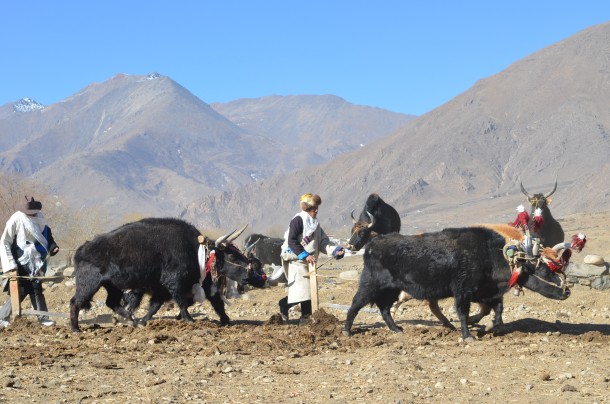Tibetan Culture And Arts-Explore Tibet.

The immense plateau of Tibet is sparsely populated and they are mainly categorized as Drogpas(Nomads) and Shingpas(Farmers), due the its geographical and natural condition, central, eastern, southern and western Tibet is mainly populated with Shingpas(farmers) while far east and west, northern Tibet are inhabited by Drogpas (Nomads) since from its early days, but it is common that both nomads and farmers can be found in the same region, where nomads live in the mountainous grassy region and farmers live bottom of the valley and bank of the rivers. Over the centuries, Tibetan culture was developed under both internal and external factors, cultural influence of the neighboring countries also played an important role in the development of Tibetan culture, including Nepal, India and Bhutan in the south and west, China and Mongol in the north and east. Later in the 7th and 8th century, introduction of the Buddhism from its origin country India had exerted a deep influence over the whole plateau, since then Buddhism became indispensable part of the Tibetan culture. Gradually cultural variations came to exist due to the regional geographical and environmental distinction in different parts of the Tibet, generally the culture variation in Tibet can be described by Utsang(central and western Tibet), Kham (far-eastern part) and Amdo (northern part), since then its geographical remoteness and inaccessibility had isolate the region from the rest of the world and preserved its rich and indigenous culture without any influence from the outside world in the names of modernization. After 1980s, when Tibet was widely opened for outsiders, it brought a tremendous boost in its economic development and phase of modernization; naturally the cultural degradation lead to a long gap between the old people and youngsters within the country, in the way of their speaking, attitude, clothing, belief, manner and so on, but the Buddhism philosophy and practice has deeply rooted in their day to day life of all Tibetans, intensively celebrate religious festivals and making pilgrimages to distant monasteries, holy mountains and lakes are becoming indispensable part of their life, so the HH. The 14th Dalai Lama describe Tibetan culture as Buddhist culture.
Recent Posts
The Perfect Tibet Tour Package
Journey to Tibet
Exploring Tibet
All Categories
- About Tibet
- book a Tibet tour
- Buddhism Practice
- Budget Tour
- China-Tibet Train
- Customized Tibet tour
- Historical Sites
- Hot Springs in Tibet
- News
- Photography in Tibet
- Tibet attraction
- Tibet Group Visa
- Tibet Motorcycle Tour
- Tibet Small Group Tours
- Tibet Tours and Tibetan Tour Guide
- Tibet Train
- Tibet Travel FAQs
- Tibet Travel Information
- Tibet Travel News
- Tibet Travel Permit Update
- Tibet Travel Prices Rises
- Tibet Trek
- Tibet Trekking Tour
- Tibet weather and climate
- Tibet Wildlife animals
- Tibet Winter Tour
- Tibetan Buddhism
- Tibetan Cultural Features
- Tibetan Culture and Poeple
- Tibetan Festivals
- What to see in Tibet



